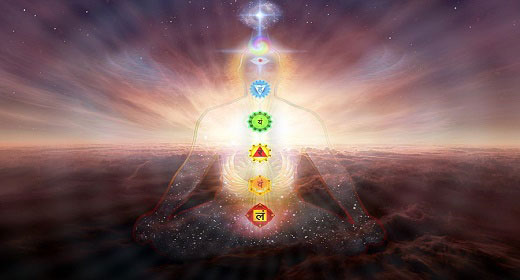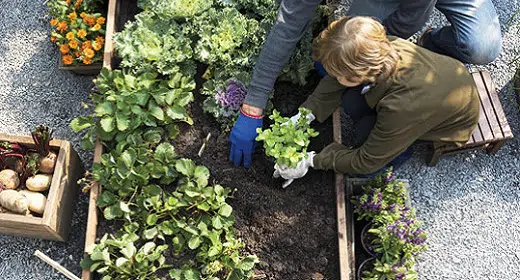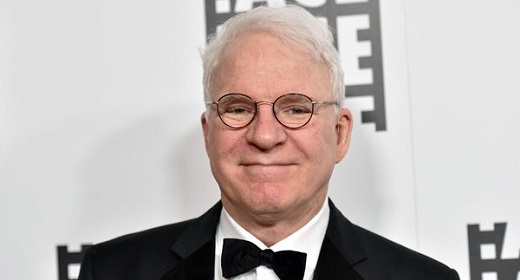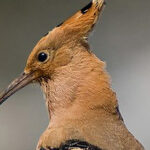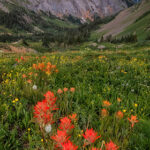COVID-19 stimulated a huge uptick in gardening interest, exhibited by the massive demand for seeds experienced by seed companies of every type. Many people are confronting the term “organic” in a new way, as each of them strives to fit garden techniques into their worldviews and philosophies. With the surge in gardening interest, it seems like a good time to explore the term “organic,” which has been tagged with so many intents and variations over the years that its meaning has become a little murky.
Searching for Organic Clarity
If we just look at the word “organic,” a whole interesting set of definitions pop up. Organic means “related to or derived from living matter.” It can also mean a “form of farming or gardening involved in production without the use of chemical fertilizers, pesticides, or other artificial substances.” Or, it can “denote a relation between elements of something such that they fit together harmoniously as necessary parts of a whole.” In agricultural terms, it’s perhaps most often associated with the USDA organic seal, which indicates that a product meets certification requirements set by the U.S. Department of Agriculture’s National Organic Program. (See “ ‘Organic’ Definitions” below for more information about what goes into the certification.)
Organic concepts are as old as agriculture itself, though, so it’s not surprising that the term has meaning deeper than a label or a generic definition. What is that meaning, exactly? It probably depends on who you ask.
My dive to further understand the term led me to a series of fascinating and enlightening conversations with three friends whose careers deeply plumb gardening. Each shared special and varied insights into what “organic” means to them and the agricultural world as a whole. (In full transparency, I don’t consider myself a strictly organic gardener, yet. I trend in that direction, however, and I resonate with the phrase “organic intent,” coined by my friend Mike Dunton of Victory Seeds.)
Leaving Something Better Than You Found It
My first conversation was with Emily Rose Haga, a horticulturist, former plant breeder at Johnny’s Selected Seeds, and current executive director of Seed Savers Exchange.
At the most basic level, from her many conversations with people involved in all aspects of farming, seed saving, and gardening, Emily says she hears one theme repeated when talking about what it means to be organic: Leave something better that you found it — which is exemplified by restorative farming, soil regeneration, and understanding the various interactions in our ecosystem.
Though not an expert in organic certification, Emily is a major supporter. She notes that from a purist standpoint, when something is labeled “organic,” it indicates a guarantee of sorts — that inputs and practices meet a standard set of guidelines. The flip side, she admits, is that corporate entities occasionally jump on the principle, embracing the financial gains without completely embracing the philosophy.
Emily also talked about the risk of alienating those who support organic practices but aren’t strictly organic gardeners yet themselves — a point that resonates with me personally. Each person who gardens or farms starts from a different financial and ideological base, with varying levels of knowledge and experience. Each new grower is embarking on a journey that evolves with time and experience.
Traditional Methods in a Modern World
For my next conversation, I spoke with Heron Breen, plant researcher and area coordinator at Fedco Seeds in Maine. For Heron, the topic of “organic” raised three broad areas of thought.
He first discussed the nature of healthy soil, citing the work of Sir Albert Howard, a British botanist who’s often considered the founder of the modern organic movement. Inspired by his work with farmers in India, Howard was one of the first to research modern organic applications of composting, cover cropping, and the use of manures in building healthy, productive soils. “Organic today has lost sight of this,” Heron said. “Many don’t understand the link between healthy food and healthy soil.”
Heron also reminded me that large-scale agriculture as practiced today is a recent phenomenon. The roots of “organic” are in sustainable small-scale agriculture, which allowed people to feed themselves and their communities, without as much concern for profit as exists today.
Heron then discussed the gap between animal husbandry and agriculture in terms of successful crop production, and how the integration of the two elements leads to a true recycling of nutrients. This natural way of building healthy soil is something the agriculture industry has moved away from, with the rise of chemical fertilizers and the stigma surrounding manure’s health concerns.
In our discussion, Heron also brought up the need to eliminate the exclusivity that can be associated with organic products and practices, and the need for more flexibility in organic certification. “We need to recognize that a variety of growing methods is needed. Inner city isn’t like a rural farm; they have to find ways to be certified using methods that are available to them,” Heron said. “Anyone, any average person, can become involved.”
Quality Consumers Can Trust
My last discussion was with Melissa DeSa, community program director and “seedeo” at Working Food in Gainesville, Florida — a nonprofit that works to cultivate a resilient local food community through collaboration, economic opportunity, education, and seed stewardship.
Neither Melissa’s garden nor the Working Food garden are Certified Organic, but they’re both grown with organic intent. For Melissa, the key to a healthy garden goes beyond what is or isn’t organic — it’s focusing on building a system that’s sustainable, local, and low-impact.
Melissa says she does have a lot of respect for the USDA organic seal in connoting a set of qualities that consumers can trust, linking back to a well-regulated set of growing standards and practices. She did note that the process can cause confusion, because public conception is that no pesticides or chemicals were used on something carrying the seal; but in truth, certain substances can be applied if deemed necessary, as long as the product is labeled correctly. (Visit Agricultural Marketing Service to learn more about the USDA organic labeling categories and to see The National List of Allowed and Prohibited Substances.)
We also discussed how it’s important to look beyond the label, and to not assume that everything with “organic” stamped on it is automatically better for your garden. For example, I tried a bagged compost labeled “organic certified” that turned out to be low-quality.
No Perfect Gardeners, No Perfect Gardens
The conversations with Emily, Heron, and Melissa highlighted how each of us see gardening as a form of meditation — a wonderful place to be transported to for quality time with nature. Gardening allows us to develop our skills and form communities with our efforts as we grow and share produce, and then save and share seeds. “Growing food — gardening — is a journey,” Melissa said. “We all make mistakes every year, but it’s important to observe, to watch, to be patient, and not to be so reactive. We pause, identify the disease, identify the insect, do some research, then act with the quality of soil and impact on the environment in mind. Always build the soil — mulch, build, and feed.”
No matter what organic practices are (or aren’t) taking place in your garden, we all recognize that there are no perfect gardeners and no perfect gardens. “You don’t learn to make a great pie crust overnight,” Heron said. “There are no simple garden hacks. Success comes from making mistakes and the experience of time and practice.”
A Flexible Approach
Regardless of what “organic” means to you and how you apply those principles, it’s important to keep an open mind and remain flexible, both in your own garden and when interacting with other gardeners. We should strive to grow gardeners, not just gardens — offer to lend a hand, share gardening advice, and avoid garden-shaming. After all, going 100 percent organic doesn’t happen overnight.
When developing a garden plan, whatever it might be, here are a few techniques to try and points of interest to keep in mind.Select and save seed based on what does well in your garden.
Soil. Building good soil takes time. Unless a new gardener inherits a site full of rich, well-managed soil, most people don’t have the benefit of decades’ worth of work incorporating manure, compost, and yard waste into their soils to naturally build fertility. For gardeners with poor soil, using a product that’s not strictly organic, such as a 10-10-10 fertilizer, may allow them to get a better start as they work toward healthier soil.
In one of my frequent phone calls with Rob Johnston, founder of Johnny’s Selected Seeds, we discussed container and straw bale gardening. These methods are used to grow gardens aboveground, and may allow for more success in a single-season effort than in-ground gardening. Many gardeners lack the perfect space to place a garden, or healthy soil to grow in, so containers and bales — as well as hydroponics, a technique that has sparked long debates on whether it can be organic or not — offer flexibility, which can greatly expand the number of gardeners in the world.
Seeds. Organic seeds are an interesting point of some contention among gardeners. Due to the additional steps required for certification, organic seed is usually more expensive than conventional seed, but some growers believe that seed produced organically will perform better. I believe organic seed production allows gardeners to identify selections that are indeed better adapted to grow well in a particular area. It’s not about the genetic material being changed by the environment; instead, it’s about the gardener noting that a few plants from a large planting of a single variety perform better. Seed saved from those plants actually selects to improve the crop.
Pest control. A few years ago, I was fortunate to be speaking at the same event as Jessica Walliser. Horticulturist, radio personality, and self-professed bug lover, she gave a lecture that opened my eyes to a better form of pest management in the garden. Her suggestion was to be patient, wait to let nature act, and time plantings with the attraction of beneficial insects in mind.
When gardeners see an insect pest and reach for a chemical dust or spray, they may not realize that such a treatment might eliminate the pest, but will likely eliminate any beneficial predators as well. Take, for example, aphids and lady beetles. Depending on weather, aphids can attack and develop a stronghold on plants prior to the arrival of lady beetles, one of their major predators. Rather that wiping out both with a spray, plant an aphid host plant a bit earlier, and then plant your main plant later when the lady beetles arrive, leaving everything in balance and not exposing yourself, your plants, and the environment to chemical agents. It’s a method I embraced, and I no longer use any sprays on my plants, preferring nature to take its course by using plant selection, timing, and location. It does take some research, thought, and planning, but it’s very satisfying to see the method work. And it helps make gardening far more than something to be dabbled with a few times a week, turning it instead into a year-long activity that energizes, inspires, and consistently amazes.
Organic Definitions
Organic food
USDA Certified Organic food is grown and processed according to federal guidelines addressing soil quality, animal-raising practices, pest and weed control, and use of additives. Certified producers rely on natural substances and physical-, mechanical-, or biological-based farming methods.
Produce must be grown in soil that hasn’t had any prohibited substances applied for at least three years. If a grower wants to use a synthetic substance to achieve a specific purpose, the substance must first be approved according to criteria that examine its effects on human health and the environment.
Organic certification
A five-step process that producers and processing facilities must undergo to sell Certified Organic products. The process involves creating an organic system plan, implementing the plan and having it reviewed by a certifying agent accredited by the USDA, undergoing an inspection by a certifying agent, having a certifying agent review the inspection report, and then receiving approval by the certifier.
Organic farming
Application of a production system that’s managed to respond to site-specific conditions by integrating cultural, biological, and mechanical practices that foster cycling of resources, promote ecological balance, and conserve biodiversity. Crop rotation, biological controls, and the use of animal manures are a few of the key components.
Organic seeds
Certified Organic seeds are produced by a certified grower, meaning the seeds weren’t exposed to any chemicals during growth, harvest, or processing.

